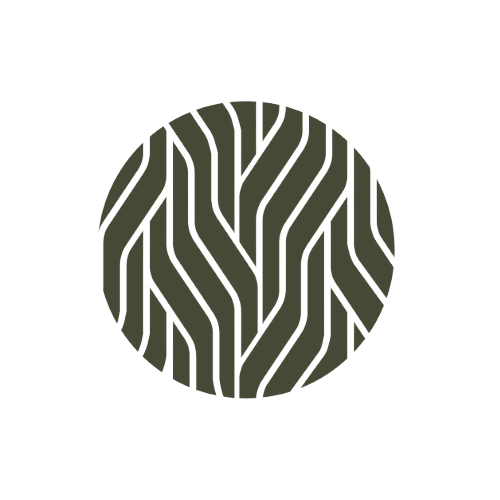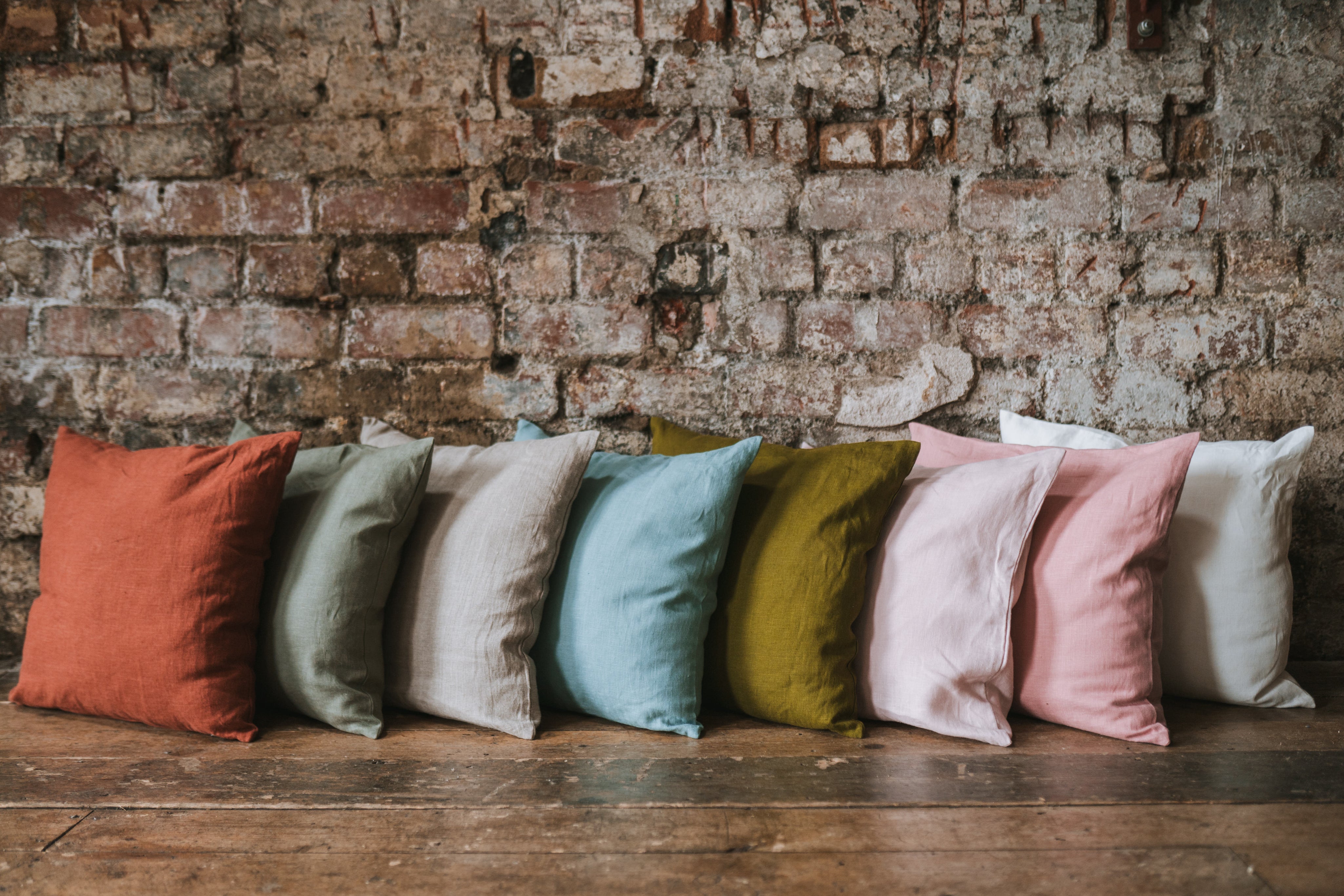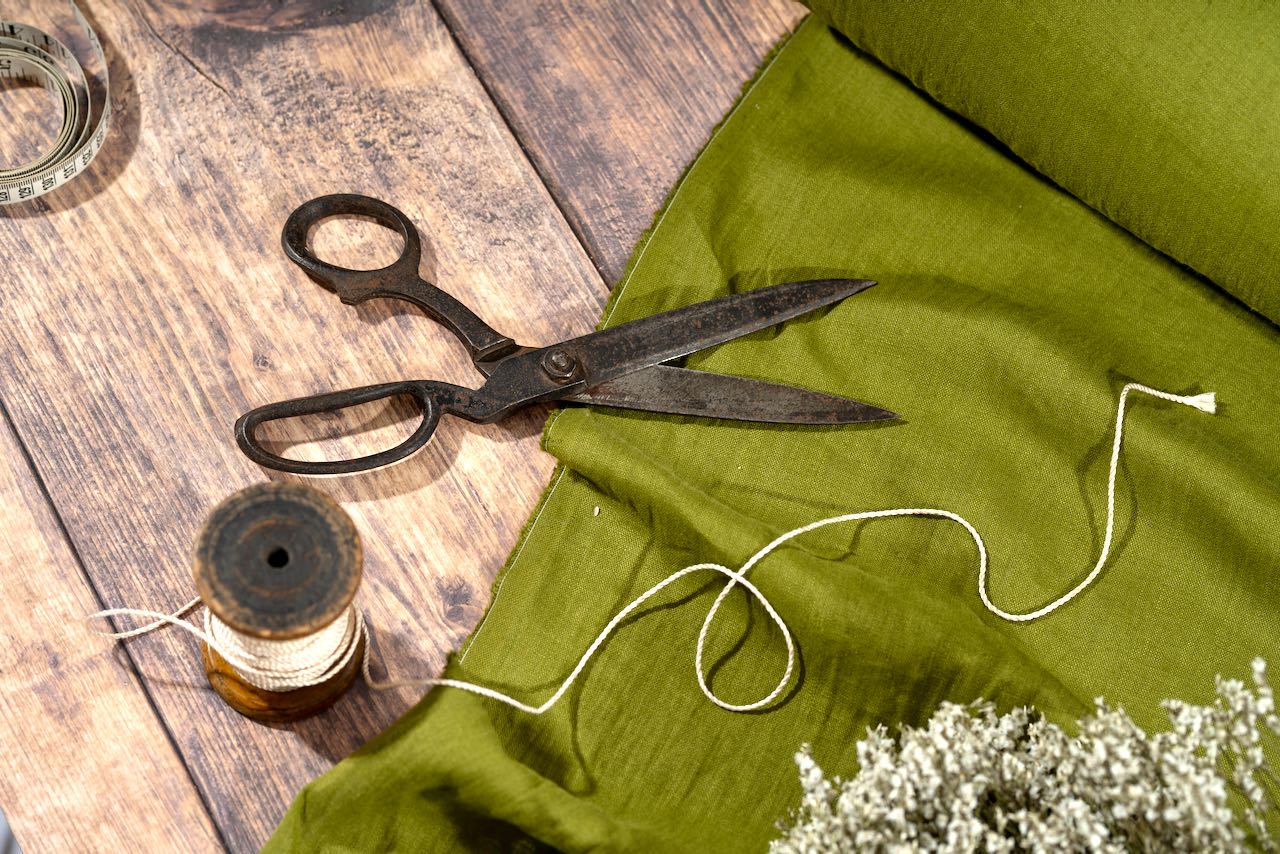What is Linen Fabric? A Dive into Nature's Finest Fibres
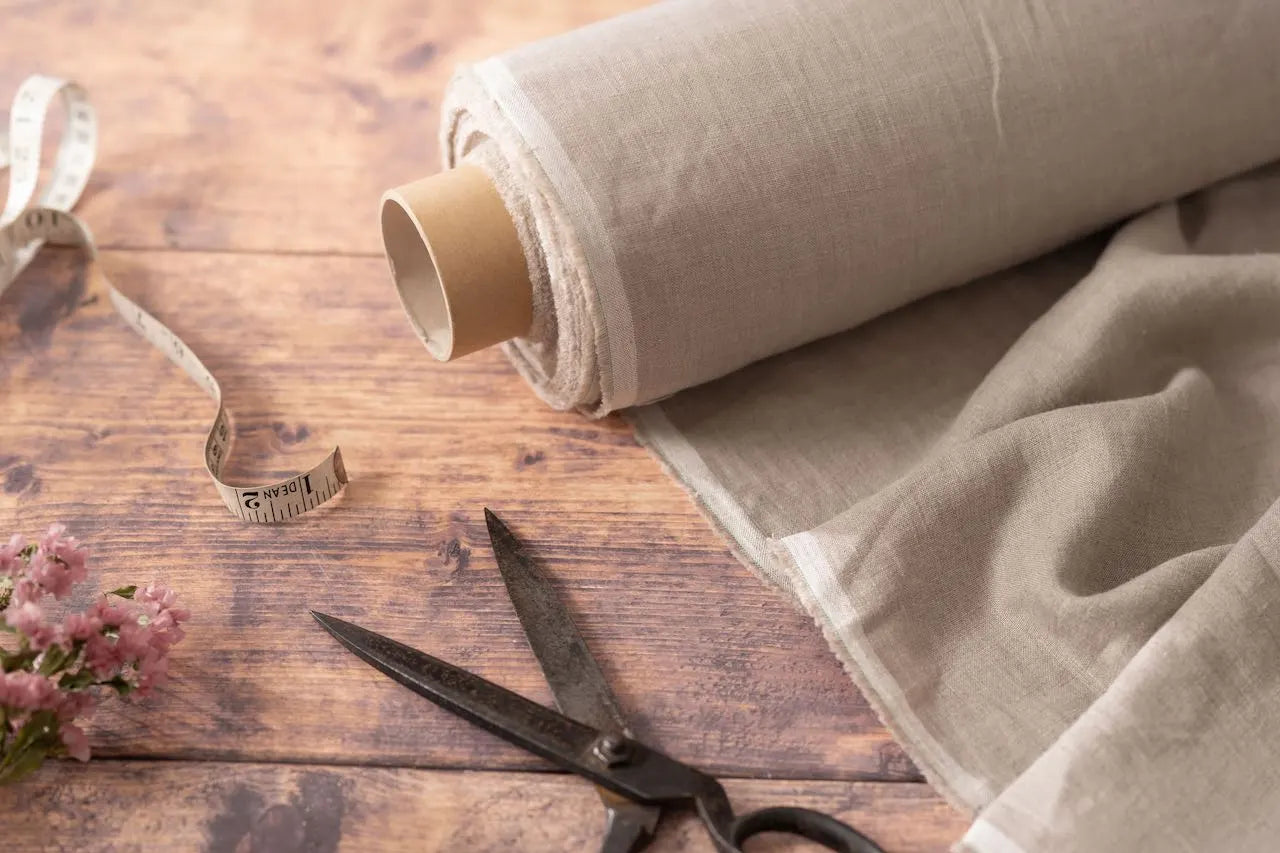
What is Linen Fabric?
Linen is a textile made from flax plant fibres, and is commonly used for soft furnishing and clothing. A natural wonder, known for its temperate regulating and moisture-wicking qualities, exceptional durability and eco-friendly credentials, its production dates back centuries and is one of the oldest known fabrics in the world.
China is currently the largest producer of linen, with the highest quality linen coming from Europe. An ideal climate for flax cultivation and rich history of linen production, makes linen crafted in countries like France, Belgium, Lithuania, The Netherlands and Ireland the most sort after when it comes to fine linen cloth.
|
Fabric name |
Linen |
| Composition | Natural fibres spun from the stems of flax plants |
| Breathability | Highly breathable |
| Moisture-wicking ability | High |
| Fabric strength | Strong, with a tenacity of 4.8 to 6.0 gm/denier (greater than cotton) |
| Natural colour | Beige to grey colour |
| Stretchability | The natural fibres do not stretch or have elasticity |
| Origin | Europe |
| Largest producer | China |
| Linen uses | Bedding, bath towels, blankets, dish towels, upholstery, dresses, skirts, shirts, trousers, suits, apparel, aprons, napkins, tablecloths |
A Fabric with Ancient Roots
Linen's whispers weave through time, a tale older than written history. Dyed flax fibres unearthed in Georgia hint at its use a staggering 30,000 years ago, a thread woven into the very fabric of ancient civilisations.
Ancient Echoes:
- 8,000 BCE: Swiss lake dwellings bear witness to linen's early domestication in Mesopotamia, its cool embrace a shield against desert sun.
- 5,000 BCE: Egypt elevates linen to currency and shrouds pharaohs in its timeless embrace, in temple robes and mummy wrappings.
- 3,000 BCE: Greece drapes its gods in luxurious folds, linen becoming a symbol of divine elegance. Phoenician traders transport linen across the Mediterranean, sowing its seeds throughout the ancient world.
European Embrace:
- Middle Ages: Exquisite lacemaking elevates linen's artistry, transforming homes into havens of delicate beauty.
- 12th Century AD: Europe embraces linen production, recognising its strength and durability.
- 18th Century: Ireland's "Linenopolis" roars, showcasing linen's economic power and shaping the fashion landscape.
A Modern Renaissance:
- Cotton's Rise: Though cotton eclipses linen's prominence never fades.
- 21st Century: Sustainability and a return to natural fabrics reignite the love for linen. We rediscover its beauty, strength, and eco-friendly magic.
From Seed to Stitch: The Linen Journey

Planting and Growing
Linen's journey begins in fertile fields, with sowing taking place in the cooler months to ensure the best yield and avoid crop death. Flax plants reach maturity in around 100 days, and when the plant reaches a height of approximately 100cm. Flowering occurs in June, with the lifespan of the flowers only lasting a few hours - blooming in the morning and wilting during the day.
Flax Harvesting and Rettling
Flax is pulled from the ground, rather than cut to preserve the length of the stems, with harvesting beginning in July and when the stems begins to turn yellow. The long roots of the flax plant remain in the soil, serving as a natural fertiliser and to support crop rotation.
The cut stems are placed in swaths on the ground and the natural process of retting begins. This takes place in warmer months of the year from July to September, with the process allowing morning dew, rain and sunshine to help microorganisms in the soil to break down the pectose in the flax stems. Pectose is what binds the textiles fibres to the woody part of the stem, with this process using Mother Nature to start separating the flax fibres from the outer layers of the stem.
Fibre Separation, Breaking and Combing
The next stage uses machines to separate the flax fibres from the woody part of the stem, by a process called scutching. None of the flax plant is wasted, with the wood fibres, leaves and seeds finding a purpose, for example animal bedding.
The flax fibres are then combed into thin strands and stretched to form soft ribbons ready for spinning. Flax from different batches of fibres, grown during different times of year and from different fields and regions is blended together to create a consistent quality yarn.

Spinning and Weaving
Spinning takes the combed flax and turns it into yarn by applying a twist. The choice of spinning technique produces a different yarn.
Wet spinning heats water up to 60°C, immersing the fibres to produce smooth, supple threads, ideal for clothing and household treasures. Dry spinning, on the other hand, crafts a thicker and more robust yarn, perfectly suited for furniture.
Why Choose Linen? A Fabric for the Modern Maker
In a world obsessed with fast fashion and synthetic fabrics, linen stands as a beacon of conscious consumption. Here's why you should choose linen for your next sewing project:
- Eco-friendly: Linen is a naturally renewable resource, requiring minimal water and pesticides compared to cotton. Its long lifespan and biodegradability make it a sustainable choice for the planet-conscious crafter, and pure linen is free from plastics.
- Durable and strong: Linen fibres are incredibly strong, making them resistant to wear and tear. Your linen creations will become cherished heirlooms, and last for many years to come.
- Breathable and comfortable: Linen is naturally breathable and wicks away moisture, keeping you cool and comfortable even on the hottest summer day. It's a dream fabric for summer garments and home textiles.
- Hypoallergenic and gentle on skin: Linen is naturally hypoallergenic and gentle on sensitive skin, making it ideal for children's clothing and bedding.
- Luxuriously soft and beautiful: With its unique drape and subtle sheen, linen adds a touch of elegance to any sewing project. The more you wash and wear linen, the softer and more lustrous it becomes.
What is Linen used for?

From catwalks to earthy interiors, flax linen weaves its magic across apparel and the home. By volume, fashion takes centre stage with 60% of linen use, with interior settings following with 30% and technical applications claiming 10%.
Linen in Fashion
While cotton may now dominate the textile market, linen retains its charm in specific niches. In warmer climates, linen remains a champion with its cool touch and moisture-wicking magic, with linen clothing items offering casual comfort and elegant sophistication.
Uses: Shirts, dresses, skirts, trousers, jackets, underwear, dressing robes.
Linen in the Home
Washed linen with its natural beauty, gentle touch and exceptional durability, has grown in popularity for soft furnishings and bedding. Napkins and tablecloths drape tables in understated elegance. Towels, offer luxurious quick-drying comfort, while bedsheets, known for their exceptional durability and high thread counts, promise a comfortable night's sleep.
The highly adsorbent nature of flax fibres, allow for a wide range of dyed linen colours, from vibrant pinks, to soft oranges and bright yellows.
Uses: Napkins, tablecloths, bath towels, kitchen towels, sheets, pillowcases, cushions, throws, blankets.
Linen in Industry
Known for their innovative fibres, flax is increasingly being used in industry, construction and design. Its strength and light weight are bridging the worlds of tech and textiles, with application in longboards, skis, bicycle helmets and surfboards
Where in the World is Linen Produced?
Though China currently holds the crown for global linen production, true quality linen stems from the European continent. In countries like France, Belgium and Lithuania, steeped in generations of expertise and kissed by the perfect flax-growing climate, the finest fibres can be cultivated. So, while quantity may reside in the East, Europe is the world leader for truly exquisite linen, woven from history, geography, and generations of expertise.

The Different kinds of Linen
Damask: The opera singer of linens, damask struts its stuff on ornate tapestries and shimmering tablecloths. Jacquard looms breathe life into intricate patterns, exhibiting luxury with every touch. This is not everyday linen, but a fabric for special occasions, its elegance reserved for moments meant to dazzle.
Plain Weave: The workhorse of linens, plain weave hums a steady tune of practicality. Dish towels, hand towels, even bedsheets find comfort in its sturdy embrace.
Loosely Woven: Like a gentle summer breeze, loosely woven linen is beautifully absorbent. From reusable diapers and sanitary napkins, its breathability whispering comfort where it matters most. Strength may not be its forte, but in delicate matters, it offers a touch of nature's gentle magic.
Sheeting Linen: With its close weave and smooth surface, sheeting linen sings lullabies in bedsheets and dreams in dresses. Thread counts climb high, offering a cool caress that begs for lazy mornings and sun-drenched afternoons.
The Environmental Impact of Linen
In a world yearning for sustainability, linen treads a lighter footstep on the planet than many fast fashion fabrics made from synthetic fibres.
-
Minimal Water Requirements: Unlike thirsty cotton, linen needs far less water to thrive. Just imagine, fields shimmering under the sun, nourished by nature's rain, not endless irrigation.
-
Chemical-Free: No harsh chemicals taint this fabric. Herbicides and pesticides find no welcome here. Flax fields hum with vibrant life, a haven for biodiversity, and ecological balance. By choosing OEKO-TEX certified linens you can be confident no toxic substances are present in linen products you purchase.
-
Biodegradable: When linen's story ends, it doesn't leave a plastic scar on the earth. This natural wonder gracefully composts, leaving no trace behind.
Explore more about linen:
- Linen Fabric Care: Learn how to keep your linen creations looking their best for years to come.
- Linen Sewing Projects: Discover a treasure trove of ideas for garments, home décor, and more.
- The History of Linen: Travel through time and discover the rich tapestry of linen's story.
- Sustainable Living with Linen: Learn how this eco-friendly fabric can be a part of your conscious lifestyle.
At Wild Linens, we believe in the power of natural beautiful, ethically sourced linen fabrics to enrich your life. We partner with expert Lithuanian producers who share our commitment to quality and sustainability. Our linens are stonewashed for a luxurious softness and with meticulous care, ensuring that every piece you create is a work of art.
0 comments
